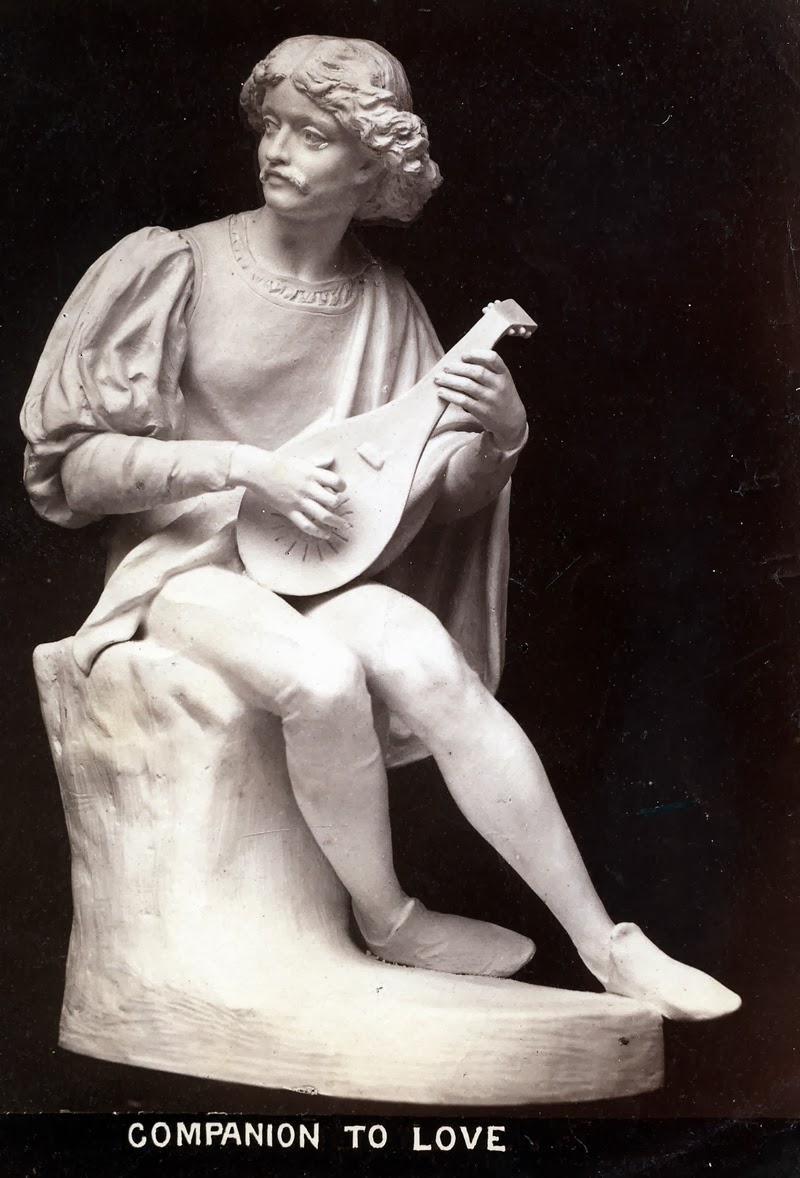 |
| Love |
A huge range of figures was produced by the company. There is strong evidence that the body was invented at the factory under the ownership of Copeland & Garrett. Initially it was known as porcelain statuary and/or statuary porcelain. It later became widely known as Parian ware. This beautiful new body was described, in about 1845, by sculptor John Gibson RA (1790-1866) as 'Decidedly the best material next to Marble'. He gave permission for his famous full-size marble sculpture Narcissus to be produced by the company in this new Parian body in 1845. What a coup...
At Spode individual figures were known a statuettes. Often there was a pair to a figure which was called a companion - particularly appropriate for a figure called Love.
 Robert Copeland researched the Parian ware production from the Spode factory in great detail over many, many years and I learnt so much from him and enjoyed assisting him in his quest for knowledge in the subject. Often his research led him to the story of sculptor, the relevant Greek myth, novel or real life biography to a statuette, a group or a bust. But in this case it seems he found no detail other than a date of introduction and some prices. I have found nothing further.
Robert Copeland researched the Parian ware production from the Spode factory in great detail over many, many years and I learnt so much from him and enjoyed assisting him in his quest for knowledge in the subject. Often his research led him to the story of sculptor, the relevant Greek myth, novel or real life biography to a statuette, a group or a bust. But in this case it seems he found no detail other than a date of introduction and some prices. I have found nothing further.You can find out all about the Parian figures of all types in his book Parian: Copeland's Statuary Porcelain. Click on the book title and it will take you to my booklist for full details.
For Valentines' Day I thought it was appropriate to show Love and Companion to Love together here.
Unlike many of the Parian figures they are not classical in design but it is not hard to imagine this sentimental pair on a Victorian mantelpiece.
I don't know why but it makes me smile to see that Love is 15 shillings in 1884. What a bargain! By 1895 I am afraid Love had risen in price to 18 shillings.
 |
| Robert Copeland (1925-2010) in the factory museum with his beloved Parian figures, 1985 |